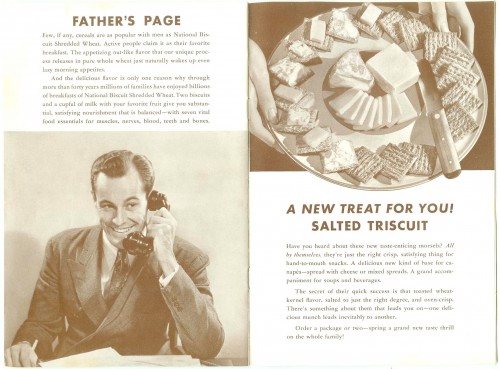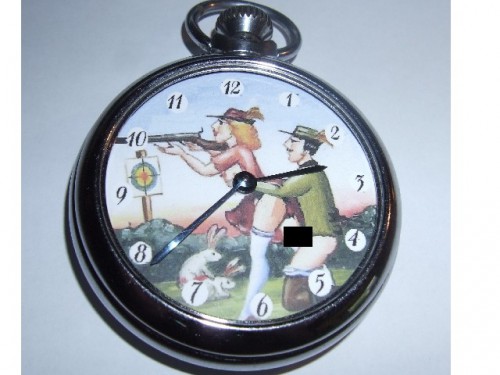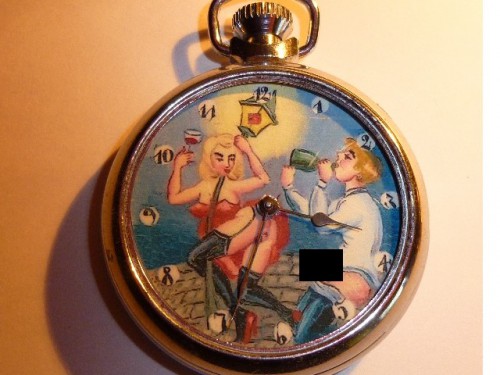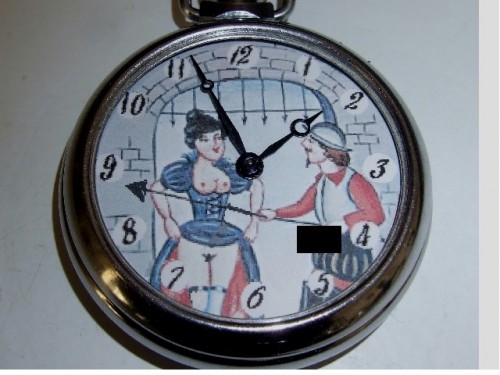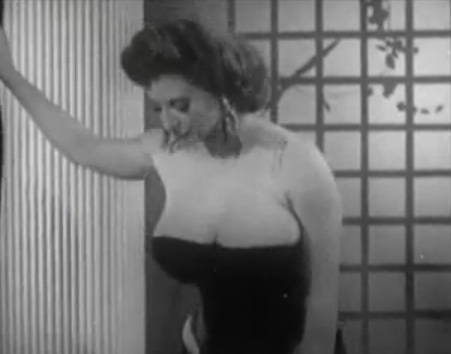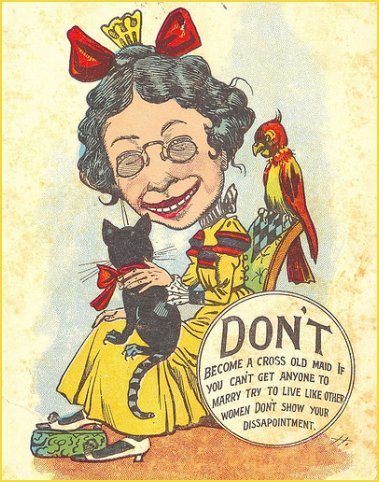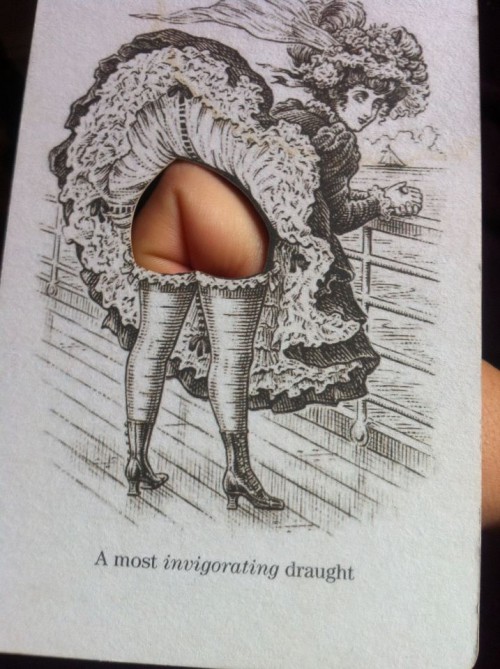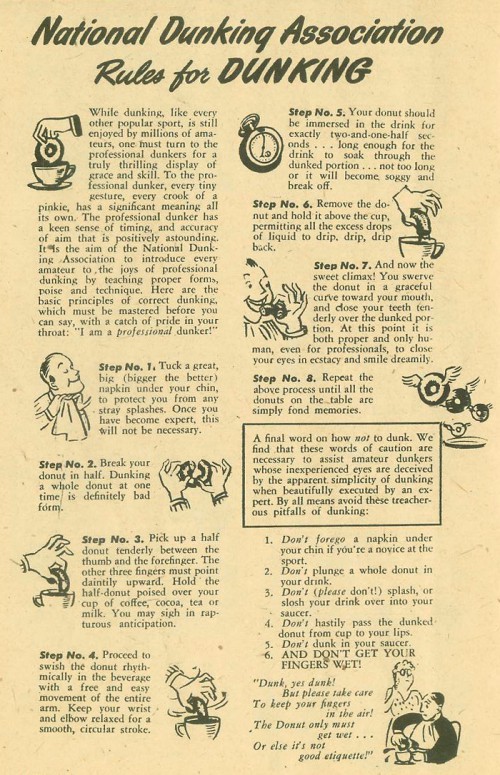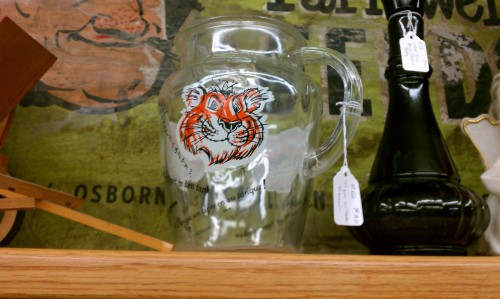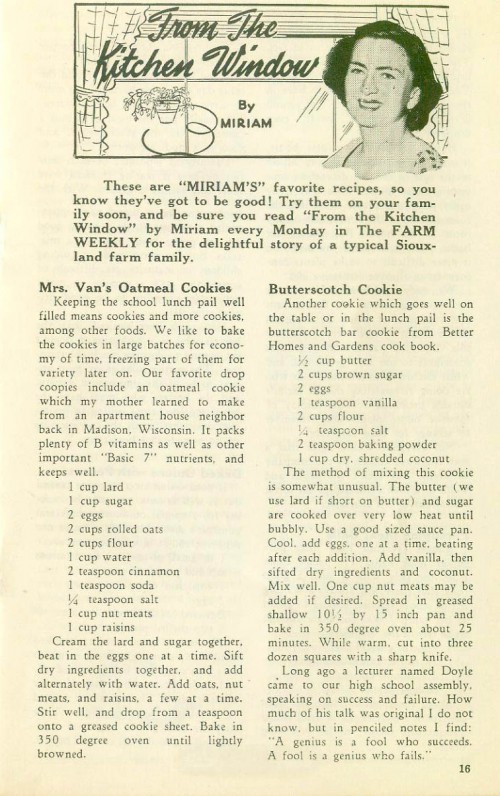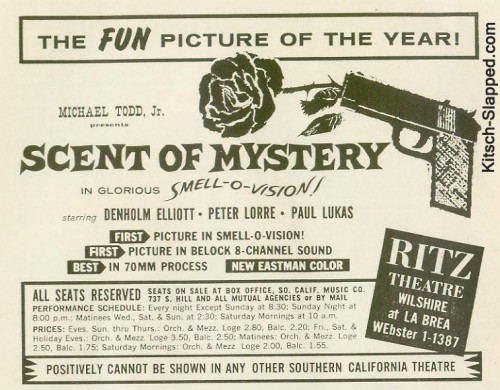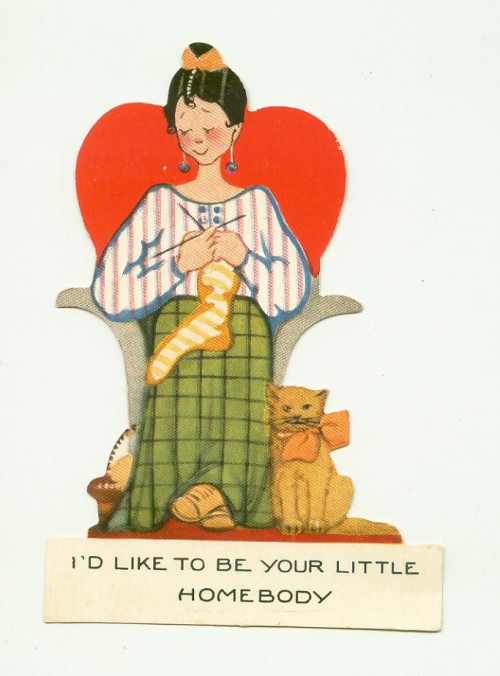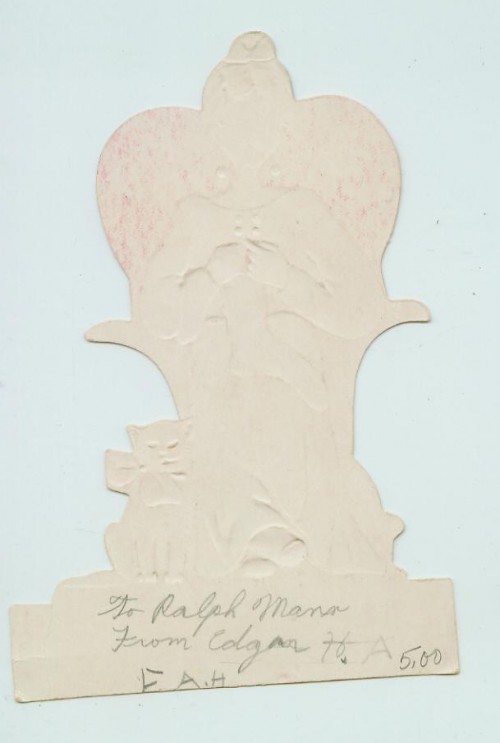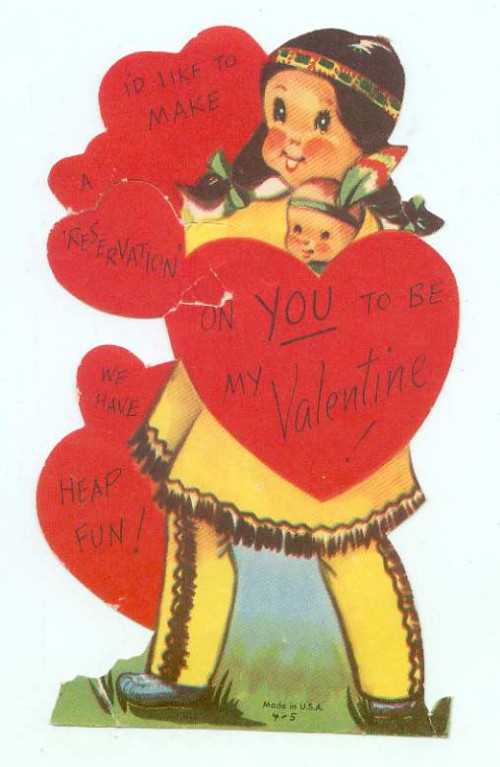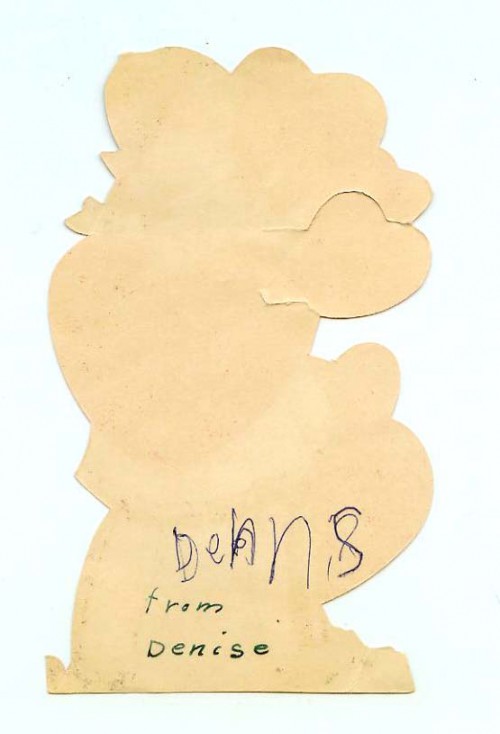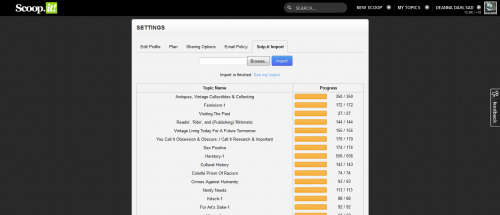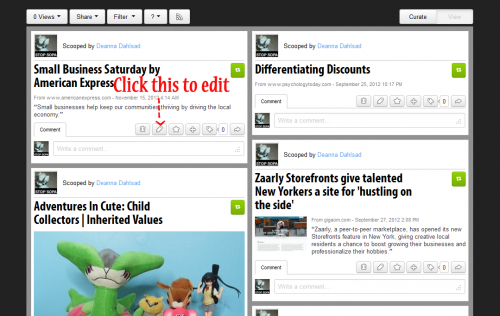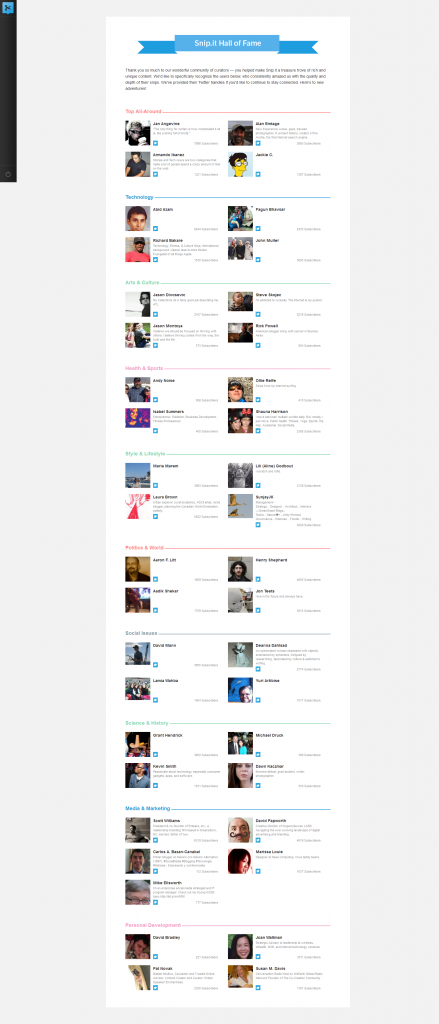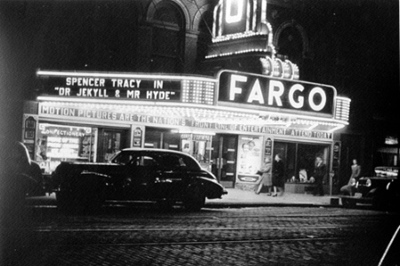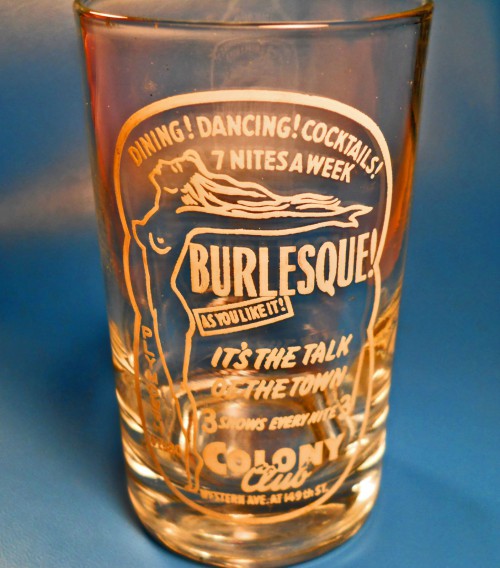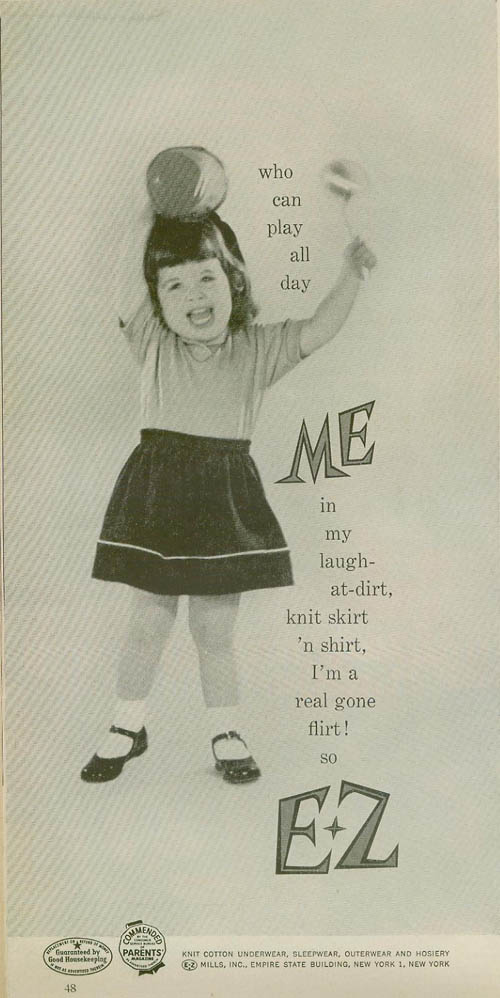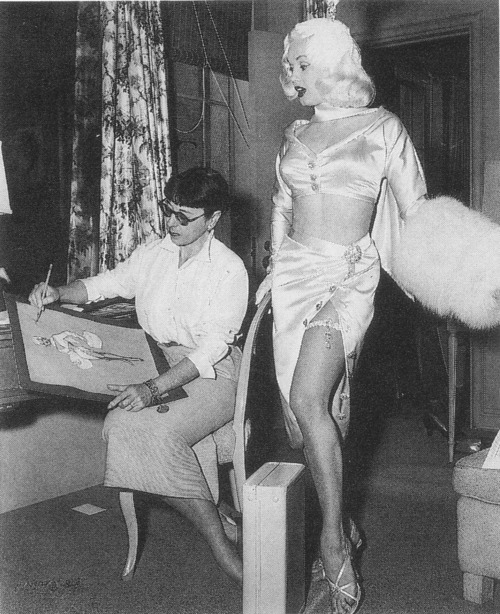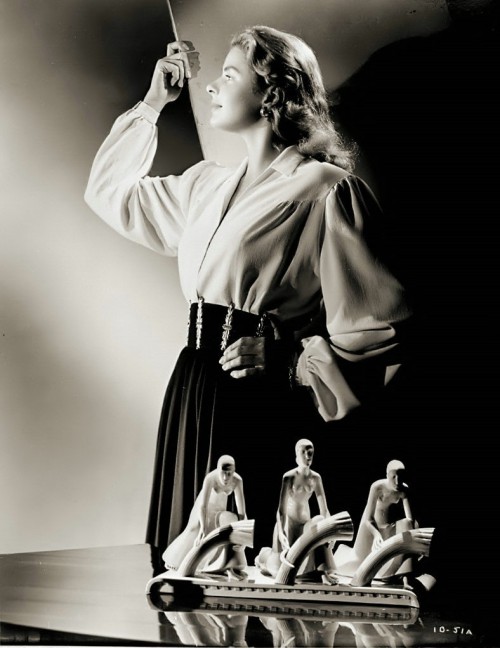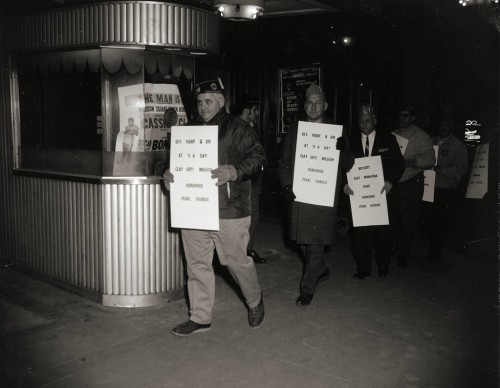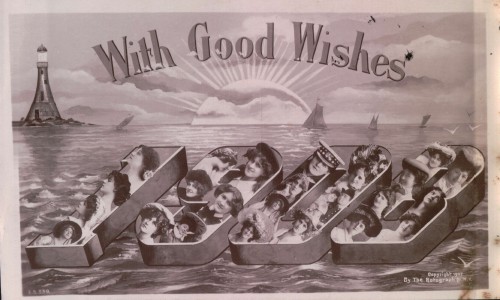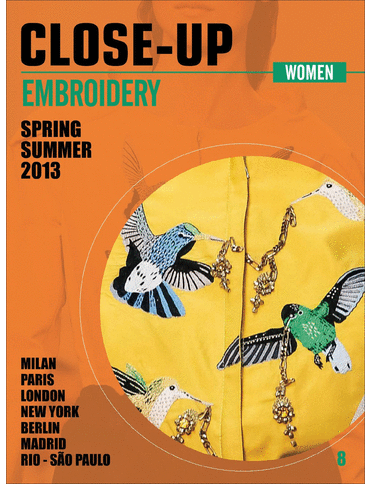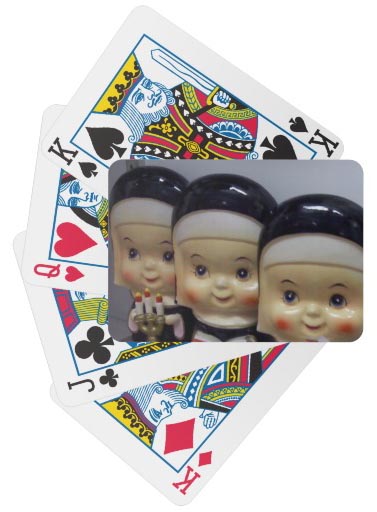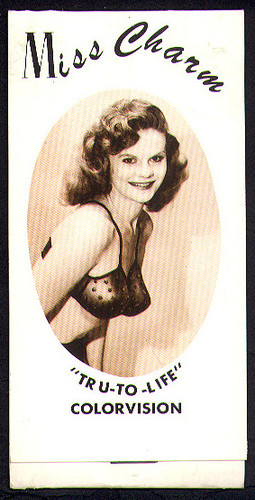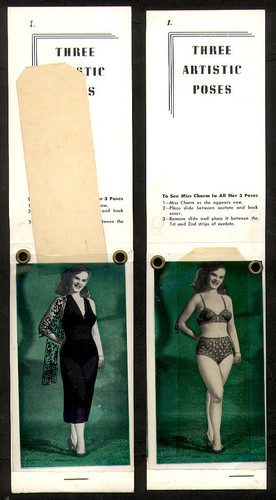Because (nearly) every little girl loves horses (I sure did!), it shouldn’t be surprising that a shelf full of horse figurines would be among the decor shown in smut to designate the juvenile status of the woman. However, in this case, one would be pretty hard-pressed to suspend their disbelief that this “babe” disrobing to her stockings and suspenders is an innocent teen; she looks a lot more like a mom in her daughter’s room — perhaps there to dust the Breyer horses, nodding dogs, and 45 RPM records. For more thoughts on this: When Lollipops Make Us Suckers (NWS).
Author: Deanna
Father’s Page
Found inside a 1940 Nabisco Shredded Wheat cook book, a page for fathers. Don’t worry, it means all men. All men were called “Father” or “Daddy”, even by their wives. And grown men who weren’t married parent? Oh, society wondered what was wrong with them. While we’re stating at this, the sepia-toned photo makes it appear as if Father is on a cordless telephone. (The opposite page promotes the “new” salted Triscuits.)
Infuriated & Embarrassed To Be From This State (Abortion Laws In North Dakota)
After calling Gov. Dalrymple, I called my state legislators too. And then I sent this letter via email to all as well in response to all the insanity occurring in North Dakota right now:
Stop these anti-abortion bills. Stop them now.
To wit:
HR 1456, HB 1305, SB 2303, SB 2305, SB 2368
And stop this sort of illegal anti-constitutional actions going forward.
Women’s rights to abortions services, clinics, birth control, and other health services are constitutional rights. If you were a woman and didn’t personally want any of these services, you just wouldn’t partake of them. It’s the same way with religion; walk right past the clinics as you would any church, synagogue, mosque, etc. If you worry about the unborn, trust your faith and leave that to God. You are not to judge. And legally you do not have the right to infringe upon the rights of others.
We women see through your blatant desire to not only remove choice but control women’s bodies and lives. You were not put into office to do this. You have better things to do, better ways to spend your time — our time and money — than on fundamentalist objectives which punish women and their families and indeed takes lives. Lives of actual people here, living, and voting as your constituents. Do your jobs and leave women’s bodies to women.
For more information, see here and here. You can track anti-constitutional anti-choice legislation in North Dakota here; and start here to track in your own state.
Watch The Objectification
I’ve often viewed sexual objectification as a passive-aggressive thing. As in the human being objectified (most often a woman) is passive to the aggressive actions (usually from men). What clinches the deal and makes it textbook passive-aggressive behavior is how the perpetrators are so insistent in their disavowal and sullen in their complaints of being misunderstood. These vintage watches (from martonmere at Etsy) are the perfect illustration of such sexual objectification of women. Note how the male penis is the automaton, moving up and down as the watch ticks, while the females remain unmovable, unfazed, objects to receive. (Not to mention, the watches need winding, and this whole subject winds me up!) More on these sort of watches here.
Breast Obsessed
John Timmer brings new attention to breasts, from a scientific point of view. According to a new article in Archives of Sexual Behavior, a study indicates Men’s Oppressive Beliefs Predict Their Breast Size Preferences in Women:
Further analyses showed that men’s preferences for larger female breasts were significantly associated with a greater tendency to be benevolently sexist, to objectify women, and to be hostile towards women.
Having spent most of my adult life in the “large to very large” categories of breasts, I can attest to some of this in a personal sense. The very fact that I know the category of my breast size is due more to male attention than bra shopping. Really.
Food for thought in terms of beauty standards — and I wonder how this fits in with masochistic “women’s magazines” which push not only the standards but beauty products as well.
In related news, Sociological Images there’s nipple talk. The comments are worth checking out as well.
Image: Cherri Knight
Old Maids
In Reflections: The Life, Writings and History of Geneva Mae Thomas Bridgford (2012), compiled by her daughter, Bonnie Bridgford Good, there’s the story of 18 year old Geneva and her friend going to the big city to attend Miss Brown’s Training School in Milwaukee. The year was 1928, and the two young ladies stayed at the Methodist Boarding School House on 11th and State — under watchful eyes.
The spinster owners of the boarding school took their responsibility of chaperoning the young women quite seriously. The older women at work (ranging in age from 25 to 40) also felt a need to mother them, and warn them of the dangers in the city. As a vent to her frustration, Mother wrote the following poem:
Old Maids
Tell me not in mournful numbers
Of the habits of old maids.
Well I know their every weakness
How their beauty wanes and fades.
They are old, they are ugly
And their hearts though staunch may fail;
For they shake and they quiver at the coming of a male.
They surround me, jeopardize me
These old maids of whom I write.
At my home and at my office
They boss me with all their might.
I’m rebelling, I won’t stand it!
And I’m very sure of this,
If I can prevent it
My name won’t always start with Miss
Sight Of Hand
The post title isn’t a typo; it’s more like a pun. See? Via.
Cheap Thrills Thursday: The Rules Of Dunking
From How To Run A Successful Party: Party Ideas, Games, Fun, For Children & Grown Ups! by Elizabeth King, with the rules for proper dunking. The copyright, 1945, belongs to the Doughnut Corporation of America, so they out to have known.
If You Only Watch One Video Today – Or In Your Lifetime
Let it be this one.
This Is My Body makes me weep — with joy, sorrow, hope, and fear.
If you like, Like.
Whatjamacallits Wednesday: Tigers In Your Tank Edition
Back when I was a kid and I didn’t understand intellectual property such as sales & marketing slogans; hence, I never understood why Kellogg’s didn’t just come right out and have Tony The Tiger say that Frosted Flakes cereal was the tiger in your own tank. I was reminded of this upon sight of this vintage Tony The Tiger stuffed toy.
To me, a tiger was a tiger — and really just as cute. (Don’t you just love the Exxon tiger on this glass pitcher?)
And fuel was fuel, even if cars had less “taste” to worry about.
I sill feel rather the same way today about both tigers and fuel. Even with a better understanding of slogans, marketing, and intellectual property. That knowledge, combined with my usual obsessive streak, has since led to the discovery that it was Kellogg’s who first unleashed their tiger (in 1951). Exxon’s tiger arrived in 1959. So perhaps it was Exxon executives who ate cereal and felt the connection between breakfast fuel and gasoline for cars.
Both of these item are for sale. I am an antiques dealer, you know. (Also on Facebook.) You may also contact me about them, if you are interested.
More Women In The Pages
Another woman for the women’s pages is Miriam Baker Nye. Known simply as “Miriam” — often used just like that, in quotes — she wrote a regular column for rural women entitled From the Kitchen Window which ran from 1953-1981 in the Farm Weekly. (The Farm Weekly was a publication of The Souix City Journal and Journal-Tribune newspapers of Souix City, Iowa, which served “all Siouxland.”) This scan of page 16 of Here’s How The Farm Weekly Serves You presumably shows the regular header for her columns.
Her recipes and ideas from that column would later be published in book form in Recipes and Ideas “From the Kitchen Window” (1973). (If there aren’t any copies at Amazon, check eBay.)
She would also author But I Never Thought He’d Die: Practical Help for Widows (1978) after the death of her husband, Carl Baker. (Three years after Mr. Baker’s death, Miriam would marry Methodist minister Reverend John Nye and become Miriam Baker Nye.)
Can You Smell That Smell? A Mystery Is In The Air
A vintage text ad from the Ritz for Michael Todd Jr’s 1960 film, Scent Of Mystery (1960), in “glorious” smell-o-vision! A film which “positively cannot be shown in any other southern California theatre.”
Along with being the first (and only) film in smell-o-vision, the first picture in Belock 8-channel sound (sound which used a control signal to “steer” the single surround channel to three surround tracks: right wall, left wall and rear wall), Scent Of Mystery used the “best 70mm process and “new” Eastman color. The film also had two songs sung by Eddie Fisher — and, because that’s how Liz rolled with her lovers, Elizabeth Taylor appeared in the uncredited role of the American heiress targeted murder victim in the film.
The film stunk-up the theatre. In a bad way. The technology was all-but abandoned, and the film was re-edited, converted, and re-released without the odors as Holiday in Spain in 1961.
Of course, smell-o-vision, as a concept, was not entirely abandoned. In the stink-o-rific world of 1980s scratch ‘n’ sniff cards, , , and scented toys, John Waters released Polyester (1982) in Odorama, which used . A decade later, MTV would re-air Scents Of Mystery using the same scratch and sniff technology. Since then, a number of other films and have used aromas as a gimmick.
It’s a shame the idea of aromas accompanying a film are now such a kitschy gimmick. I’m sure Todd and Waters were trying to tap into something more than that. For smell is a powerful and unique sense, strongly and uniquely linked to memory. Properly used and executed, smell-o-vision and all the rest could do more than entertain; it would evoke and create memories. It could boost the cinema and revive community theaters.
Sexism In Collecting Vintage Valentines
Today we celebrate Valentine’s Day. I wrote about why many collect old Valentines at CQ; but wanted to share this one from my own collection.
As a feminist, I obviously take issue with a woman professing “I’d like to be your little homebody.” And there she sits, knitting socks, with the ever-present female-as-feline domesticated cat.
Since these little vintage Valentine’s Day cards were, then as now, passed out in schools all over the USA, it’s only natural that you’ll find some cards not only signed by boys but presented to boys. Still, the fact that Edgar signed this gender stereotype card to Ralph makes me take pause…
This literally is how gender stereotypes have been passed along — and it’s just another example of the rote mechanical nature of boys getting the task of forced Valentines sending over with.
Be My Racist Valentine: Native American Edition
A vintage die-cut Valentine greeting card that children passed out to one another in school, featuring a Native American mother and child — and including racist, stereotypical, “Indian” puns.
I’d like to make a reservation on you to be My Valentine! We have heap fun!
Interestingly, there are two signatures on the back; proof that someone had trouble spelling their name. Dennis or Denise? I am not certain.
As I’ve said, I can’t keep them all. And as a white woman, I probably should not keep this one. You can buy it here.
Calling All Former Snip.It Users & Future Content Curators!
As mentioned in my interview with Scoop.It’s Guillaume Decugis, Scoop.It has been working on a way for those of us abandoned by Snip.It to upload the exported data. Earlier this week, I beta tested the new import feature — and it works quite well!
As you can see, there were some topics or categories in common, so I will have to work a bit to resort and even delete both individual links and entire topics. (Because I specifically worked to make sure that my feminist topic at Scoop.It was different from my feminist collection at Snip.It, I have to check each link before I hit delete — however, Scoop.It’s system has always let you know if you’ve scooped a link before, so it goes faster than you think!)
Amazingly, all of my collections uploaded — giving me more collection or topics than Scoop.It previously allowed! And it’s not just for former Snip.It users either now.
For the month of February, Scoop.It is “lifting the topic creation limit: for free!” That means, even if you were not a member of Snip.it, whether you were a Scoop.It user or not, you can get an unlimited number of topics to curate at Scoop.It!
Again, this is only for the month of February (2013). (Which works out pretty good for Snip.it users who have to download their export file of collections and snips by the 21st of the month.)
Here’s How You Do It
Step One: If you were a Snip.It user, and haven’t already done so, go here to export and save what you’ve snipped using the “Export To HTML” download button.
Step Two: If you are not already a Scoop.It member, join now.
Step Three: Once you are a Scoop.It member, contact Ally Greer at Ally@scoop.it. Introduce yourself as a former Snip.It user and request the account option to import Snip.It collections.
Step Four: When the option has been activated, login to Scoop.It, use the drop-down menu beneath your name and click on the Settings option.
Step Five: In settings, look for the Snip.It Import tab; click it and you’ll see where to upload your Snip.It export file.
What’s very cool, is they have progress bars to show you how it’s all going. For those with many collections and thousands of links, it goes faster than you think — especially when you can see that it is working!
Pretty easy and fabulous, right?
A few of the links, very few percentage wise, did not upload the images. But with Scoop.It, you can always edit your scoop, including uploading your own image. So if that bothers you, you can fix it.
First, click the Edit button…
Then the Edit Image button to upload the image.
Once you join Scoop.It, let me know. (You can follow my topics or just leave a comment here with a link to you at Scoop.It; whatever works for you.)
And if you have any problems, contact Ally; she’s always there to help. Really!
PS If you are new to curating, don’t have any file to import, or are an existing Scoop.It member who just wants more topics (for free!), you can still take advantage of the free love at Scoop.It this month. All you have to do is ask for more topics by sending an email to business@scoop.it. Again, details here.
The Scoop On Content Curation & Scoop.It
Once Snip.It pulled the plug on the content curation site, thereby pulling the rug out from under the feet of content curators like myself, I began speaking with the fine folks at Scoop.It.
 As always, Community Manager Ally Greer was there with more than kind, supportive words but with some action too. Thanks to her, and the other responsive folks at Scoop.It, there will be some great news coming from my now favorite curation site soon. (Hint: They are working on a way for the exported Snip.It file to be uploaded to Scoop.It; details to follow, so stay tuned!)
As always, Community Manager Ally Greer was there with more than kind, supportive words but with some action too. Thanks to her, and the other responsive folks at Scoop.It, there will be some great news coming from my now favorite curation site soon. (Hint: They are working on a way for the exported Snip.It file to be uploaded to Scoop.It; details to follow, so stay tuned!)
Meanwhile, I wanted to talk about why why many had not been using the site – like myself, had not been as dedicated to Scoop.It. After all, while many are scrambling to move their online curation, the same reasons why they hadn’t used Scoop.It before may very well still apply, right? And what better way to discuss this than with Guillaume Decugis, Co-founder and CEO of Scoop.It.
Thanks so much for making the time to discuss this with me, Guillaume.
Decugis: Thank you for giving us this opportunity to communicate with you as we try to find Snip.it users a solution to migrate their topics to Scoop.it.
You might not feel that way after I shoot some hard questions at you! Here’s the first one:
The problem, comparatively, with Scoop.It vs. Snip.It, was the limited number of collections or topics. Many of us had 20 or more collections, and even the business plan has a limit of 15. Can you explain Scoop.It’s reasoning for limiting the number of topics?
Decugis: In the very early phases of Scoop.it private beta, we were confronted with a very simple problem: some people were doing domain squatting on Scoop.it urls without actually using them to curate content. Scoop.it topic urls are unique and it works really well with our topic-centric model: we’re not just about curating content but we also strongly believe that we offer better discovery capabilities to our users by having this model where you curate, discover and follow topics. Making urls unique encourages users to be specific on the niches they cover. So preventing domain squatting was one pragmatic reason to implement topic limitation.
What we discovered since then is that even though we fully understand that some people might want to do more than these limits, this limitation actually forced them to focus on what they felt was essential — one of the objectives of content curation. Content curation in general, and Scoop.it in particular, is biased towards quality vs. quantity after all. We’re not saying you can’t have both, and there are exceptions, but so far the scheme has been working pretty well even though that’s of course something we might revisit at some point.
Of course, paying is also a concern. We obviously feel the pain of “free that can go away” (despite millions of dollars Yahoo! paid), but paid service sites also disappear… Can we be assured Scoop.It won’t vanish? Or at least not in a matter of minutes, without warning?
Decugis: First of all, we’re not forcing anyone to pay: Scoop.it is a free service and will always remain free. Free users are very valuable to us as they help the Scoop.it brand awareness by bringing qualified traffic to the platform. Thanks to them we grew from 0 to 7 million monthly since our launch. So everyone is welcome to use Scoop.it as much as they want for free. Premium plans are here to add value to professionals who want more from Scoop.it or businesses and companies who want to use content curation as part of their content strategy.
No company can ever say “we’ll be here forever”. However, I think free Web services without any implemented business models are likely to be much more vulnerable which is why it’s been very important to us to launch Scoop.it publicly only until we had a good idea what our business model would be. We had close to a year of private beta (yes, we took our time…) but this was very important to us to understand how the balance between free and paying users would work, what people or businesses would be ready to pay for and at what price. We can’t say the current model is perfect, nor that there won’t be any changes. But a bit more than 1 year after our public launch, we’re very happy with the revenue we’re generating, the number and growth rate of our paying customers and, more importantly, their strong loyalty to their premium plans and the low churn rate we’re observing. In the long run, profitability is the only thing that can guarantee any company’s survival and while growth has been our main focus, having a sound business model has been one of our other priorities from day 1.
The last thing I want to say about this is that we view Scoop.it as an open platform: we offer multiple interfaces with social networks but also blog platforms like WordPress or Tumblr as well as RSS feeds and an open API. This provides multiple export capabilities for our users’ curated content and we’ll enable even more in the future. We think the value we build as a company is in our active and growing community – not in locking up our users in a proprietary platform.
I know beggars can’t be choosers, but is there a way former Snip.it folks could get a discount on Scoop.it services?
Decugis: Though we’re happy for Ramy and the team at Snip.it and wish them the best in their integration with Yahoo!, we feel sad about the Snip.it service shutting down. We didn’t plan to do anything specific, but some Snip.it users like yourself have asked us whether they could import their Snip.it collections to Scoop.it and we’re investigating that. We don’t plan to offer a discount on Scoop.it premium plans, but we’re looking at what we can do to welcome Snip.it users who want to join our community while obviously being fair to our existing users. Stay tuned.
I can’t thank you enough for your time, Guillaume. Hopefully this will address the concerns and potential fears of people who are considering using Scoop.it.
As for me, my final thoughts are this: Scoop.It may be forcing us all to limit or tighten up our topics of interest (which does have both its pluses and minuses), even when you pay to play — but they’ve always had their strong points that can’t be refuted.
One, they’ve always had the best means of connecting and disseminating curated content to social media sites and blogs.
Two, they’ve always had the best method of suggesting content to a curator. In fact, they may be the only curation site to offer that option — which has proven to draw in members who may not even curate, but read and watch. Turning lurking subscribers into participating, engaged members is not to be undervalued.
Three, as you can see with this interview, the folks at Scoop.it are readily available to discuss issues, concerns, and suggestions.
As Guillaume Decugis and I have both said, stay tuned!
Snip.It Snaps
Today, just hours after I tweeted how much I loved the site, Snip.It was purchased by Yahoo. That’s good news for Ramy Adeeb and crew, but it leaves those of us who were fans of the site without the space for curation. Personally, despite being mentioned in the Snip.It Hall Of Fame, I feel as others do: tossed aside. Even with all the beta testing etc. I worked with Adeeb and others on, I found out after the site was “shuttered”. All my work there nothing but a downloadable file to upload at a short-list of bookmarking sites — which is nothing like content curation at all, and Adeeb and crew know it.
Personal whining aside, the worst of all this is the BIG business mistake of it all.
Handing things this way means Adeeb, Snip.It, and Yahoo alike all miss out on the good will and future adoption of whatever Yahoo plans to do with Snip.It. Instead of keeping all of us who loved the site in the loop and even in the game — waiting to kill services until after there was the new place for us to participate, this action has rather insured that we won’t give a flying fig about whatever the new service or site is about.
You can’t blame the likely death of Snip.It’s potent new life as part of Yahoo completely on Yahoo — even if there’s a history lesson in that. No, you have to blame the folks at Snip.It for devaluing users so much that we there couldn’t be a “Snip.It’s closed, sign up and merge your account at the new Snit.It.Yahoo” link for us to follow.
Tossing aside Snip.It users like they did, means that I myself have a bunch of orphaned users or followers of my own. That leaves a bad taste in my mouth. And one I’m not likely to forget. Even if someone from the old or new Snip.It comes-a-calling, asking me to adopt the new site.
When Movie Theatres Die
I watched both of these on TCM a few weeks ago and was thrilled to find them available online. This Theatre and You was put out in 1948 by the Academy of Motion Pictures Arts and Sciences to educate about the importance of movie theatres in a community — your community. And 1953’s The Case Against the 20% Federal Admissions Tax on Motion Picture Theatres provides a look at an industry which may seem like a dinosaur now, as we sit solo and absorb our individual digital media. But moving away from the shared experiences of film certainly explains a lot about the failings of old downtown centers and communities alike.
It’s well worth the little over 30 minutes of your life to watch both of these.
Image of the Fargo Theatre, 1941.
Drink In The Vintage Burlesque Atmosphere
A vintage glass from LA’s Colony Club.
Who Can Play All Day?
Vintage Hustler Toys & Games
No, not that Hustler; these are vintage toys shown in a Billy & Ruth catalog from 1930.
Designs On The Teacher’s Pet
Edith Head working on costume designs for Mamie van Doren and in Teacher’s Pet (1958). Via.
Ingrid Bergman Had Great Knick-Knacks
Via.
Sign Of The Times, 1970
In this photo, veterans protest the Cassius Clay VS. Oscar Bonavena match at Madison Square Garden in December 1970.
Their signs read, “GI’s fight & die at $5 a day; Clay gets million; Remember Pearl Harbor” and “Boycott Clay Bonavena fight; Remember Pearl Harbor.”
Muhammad Ali would triumph a year later, when the Supreme Court would reverse his conviction and uphold his right to be a conscientious objector against the Vietnam War.
I’m Wishing You A Happy New Year Early — With Old Women In Watery Graves
I never can wait to share things, and this time of year is difficult enough for me — so you get this gem weeks early. Reading simply, “With Good Wishes,” this antique postcard features the roly-poly heads of women inside the 1908 — the numbers look a lot like floating coffins. Floating coffins of women’s heads, featuring lots and lots of hats. Thankfully, this was a few years before the Titanic; but it doesn’t really minimize the creepiness, does it.
Copyright 1907, The Rotograph Co., N.Y.; card number appears to be I 5 339.
Found at Exit 55 Antiques; may still be available there, and they will ship, so call them if interested.
UPDATE: Harold Ackerman, the man who runs Rotograph.org, was kind enough to identify this postcard as XS 339; my interview with him is here.
Oh, Savvy Media Girls…
Magazine subscriptions and single issues are 50% off right now at Zinio — and I’m giving away subscriptions to nine lucky winners at my other blog! Fashion, home decor, cooking, art magazines and more, so check it out!
The Pageantry Of The Katy High Pun
From hubby’s blog, here’s one of the images of Carol R. Dettmann as “Katy High,” promoting TV station KTHI and the station’s record-setting construction project in North Dakota. At six-foot-one, Carol Dettmann was Miss Tall Milwaukee and possibly Miss Tall International in 1963…
The Early History of Women & Film
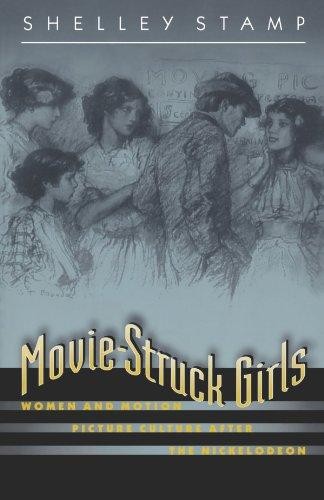 In Movie-Struck Girls: Women & Motion Picture Culture After the Nickelodeon, by Shelley Stamp, we learn more than just the roles of women in films or behind the camera — we learn about women’s role as patrons of cinema.
In Movie-Struck Girls: Women & Motion Picture Culture After the Nickelodeon, by Shelley Stamp, we learn more than just the roles of women in films or behind the camera — we learn about women’s role as patrons of cinema.
The book is an eye-opening look at a long ignored part of American film history — and an astonishing look at the history of women as media consumers.
Stamp spent over ten years researching for this book. She studied trade journals, fan magazines, ephemera, and many official documents and records at the National Board of Censorship Archives in New York City, the Academy of Motion Picture Arts and Sciences’ Margaret Herrick Library in Los Angeles, & the New York Public Library for the Performing Arts. Many of the films she reviewed are no longer readily available, let alone circulating, but can be found at the Library of Congress & the UCLA Film and Television Archive.
It sounds like a huge undertaking, & I thank her for it. ‘Movie-Struck Girls’ presents a wealth of information that I had never known before.
Movies began with the nickelodeon, and as such, movies were not places for proper or even improper ladies to be. In the early 1900s, when films were being moved from temporary places with projection onto sheets & walls, and cinemas were being built, many in the business of film, began to reconsider women. This was a purely economic move. For if these new developments, these more expensive buildings, were going to pay for themselves & gain profits to pad pockets, the new movies must include women as patrons & gain their approval.
Why? In ‘Movie-Struck Girls’ the author reminds us of an America where women were seen as the keeper of the family morals. Neither little Johnny Jr. nor Johnny Sr. would be allowed to go to such places if Mother didn’t approve. In order for women to view movies as more than sordid places where her family wouldn’t be caught dead, these new cinemas would need to gain the respect of women. The best way to do that, would be to show women, fine respectable women, how respectable & fine the theaters were. It was thought that if women would give the theaters a try, and continue to come, their physical presence would elevate the standing of film viewing.
So, movie theater owners began to court women as patrons.
They did so via premiums & tie-ins & in addressing the decor of the cinemas themselves. As a marketing person, I enjoyed the conceptions about women, and how they would lure them into the movie-going fold — with many of the tricks still employed in the movie trade today. As a woman, I felt more than a bit bitter to see what they thought…
As Stamp illustrates, cinemas were designed with appeal to women in mind. They were located near shopping and offered services such as package holding with hopes of luring women into the buildings. The buildings themselves were decorated to attract the feminine. It was suggested in industry publications that cinemas ought to have lobbies, with plenty of mirrors, to encourage female patrons — by appealing to their vanity. They thought ‘what woman doesn’t want to see herself & parade for others?’
But then, they complained that women didn’t know how to behave properly: they talked, they interrupted the absorption of the movies themselves. The very women they encourage to be vain, to come to the theater to be seen, these women didn’t want to sit quietly in a dark room full of others who were not paying attention to them. These women who were, by societal standing, to ‘dress’ for these public events, they wore hats that blocked views. And so even while courted by the film industry as valuable assets to ensure the viability of films as safe, moral entertainment for families, the industry mocked them in articles & cartoons. The debate within the industry as to the need for women, how to both cater to while educating them to achieve their purpose, was entering full swing.
But this was only the industry side of the debate; Next, Stamp shows us society’s debates.
In the early 1900’s, the most popular films were vice films, & in the teens, a major societal concern was The White Slave Trade. Sensational white slave films were made during this time, to warn folks of the dangers to their women. Conflicting with the as-billed-educational-films messages, cinemas brought women-folk out into public where they could easily fall prey to such ills as the white slave trade. Debate centered around the irony. Other debate focused on the films themselves, and censorship issues were raised. And to make matters worse, women seemed to enjoy such films! Oh, how could such tender beings watch & enjoy such lewd filth such as scenes from brothels?!
Obviously, women enjoyed the films from the same points of fascination as men, but as the author clearly reminds us, there is more. Adding to the fascination, was the fact that women themselves has seen little of ‘the world’ — even if that ‘world’ was part of their very own city. Through movies, women vicariously saw their nation. This alone would make these films riveting for women.
Again, as movie houses were public gathering places, classes mingled. Not only were there the fine upscale families as so recruited by theater managers, but along with them, the working class — including single women. Single women moved about the theater as patrons, both in danger & dangerous themselves. A woman alone could end up in the slave trade, or she might mingle with gentlemen of good standing… In fact, theaters often hired pretty, single young girls to be ticket sellers, ushers, cigarette girls etc. This was seemingly at odds with the motives of ‘women adding respectability’ and elevating the idea of theater, but it was a lure that worked. But the independent woman, even if only a work-class-girl, is dangerous. Much debate centered around the appropriateness of such places for women & families.
Since the elevation of cinema depended upon the stamp of approval from women, including materials & promotions designed to engage them, the talks about women’s roles in film viewing were discussed by women. Given the general fear of ‘those darn suffragettes,’ encouraging women to debate the social & safety issues of women viewing film — in the context of women viewing educational films about civil matters — seemed a dangerous thing indeed.
The film industry needed to ‘clean up’ the entertainment, so they began to focus on films aimed at women, with stories & formats they knew — Enter the serial film.
The industry coordinated film with print versions of stories in newspaper & print publications. Again, these were often aimed at women, but then came the ‘oh no!’ cry, as women did in fact enjoy the adventure stories. It is at this time that film gave rise to the very popular female star. She was now revered for both her on-screen & off-screen antics. So much so, that young women everywhere started dreaming of being a movie star themselves!
To counter act the scary notion of independent women, adventure serials, & vice films it became routine to mock independent women, with notions of becoming a movie star, or worse, civic ideas. The author clearly shows examples, such as a 1916, The Motion Picture Classic cartoon with the following poem to illustrate this concern:
“When our dear grandmas were girls,
They’d smile and smooth their pretty curls.
Look in the mirror then & say
“Oh, will he think me fair today?”Today the girlies everywhere,
In the mirror gravely stare;
“Am I fair enough,” they day,
“To be a movie star some day?”
But poetry would not be deemed enough. There would also be many films to lampoon the suffragette.
Mainly these films attempted to show how crazy things would be if women could vote. Movies depicting women taking over government & leaving men’s needs behind darkly illustrating the dangers present to men were made, but more often, comedy was used. Cross-dressing men & women exchanged roles, with only love ‘saving’ the women from their folly. Ironically, it seems to the reader that perhaps these movies did more favor to the opposition than to their own cause.
The suffragist movement noted the power of cinema. If educational films were popular, and women not only allowed but encouraged to attend, why not make propaganda films of their own? Both the National American Woman Suffrage Association (NAWSA) & the Women’s Political Union (WPU) made films to both rally women to the cause & to educate resistant men & women. Sadly, many of their films seemed to falter at romantic notions. In order to make the female stars appealing, less threatening, most often the female lead would succumb to love & home, happy with her vote, but definitely not claiming civic responsibilities.
In ‘Movie-Struck Girls’ you learn all about these long-hidden details of American film history & it’s collision with turn of the century American values — including titles, studios, stars, organizations, & political figures. For a person who adore film & is a passionate feminist, this is a great read. Why it’s as thrilling as those old adventure serial films!
Stamp does a great job of presenting this long ignored part of film — and women’s — history. It’s definitely an academic read, which means it is meaty enough for those who want to further search for clues, artifacts & films themselves. It may not read like a novel, but it’s so fascinating & full of details, it won’t disappoint. Fans of film, especially silent films, cannot call themselves educated in the subject unless they know this history. And women, well, we start to see a much larger image emerge — our complaints regarding women in the media have much deeper roots than we previously knew.
Pray For Luck Poker Cards
I just uploaded these kitschy retro nuns on playing cards to the Zazzle shop I run with friends. Today’s the last day to save 50% with code MAGICALSALES at checkout.


